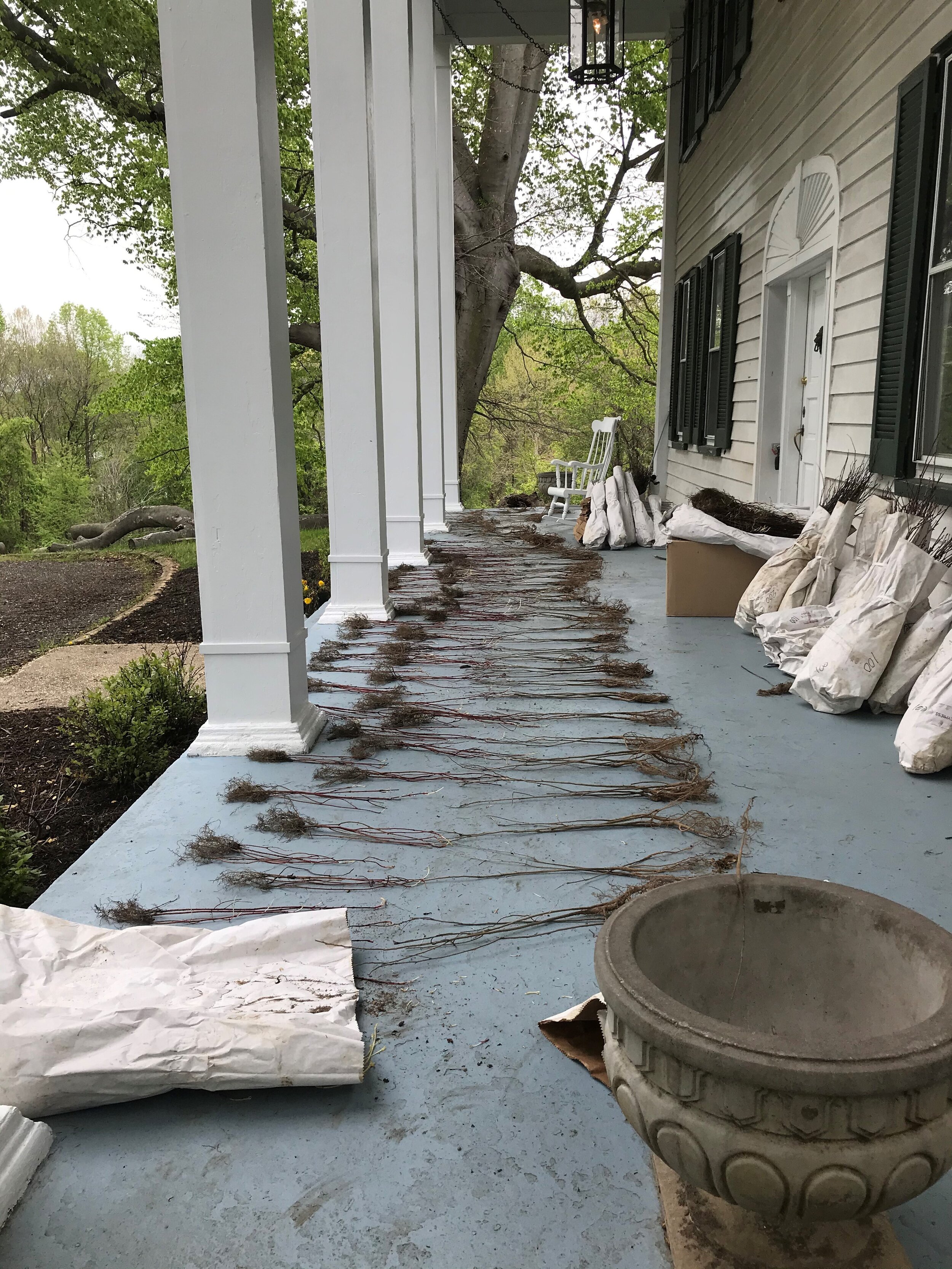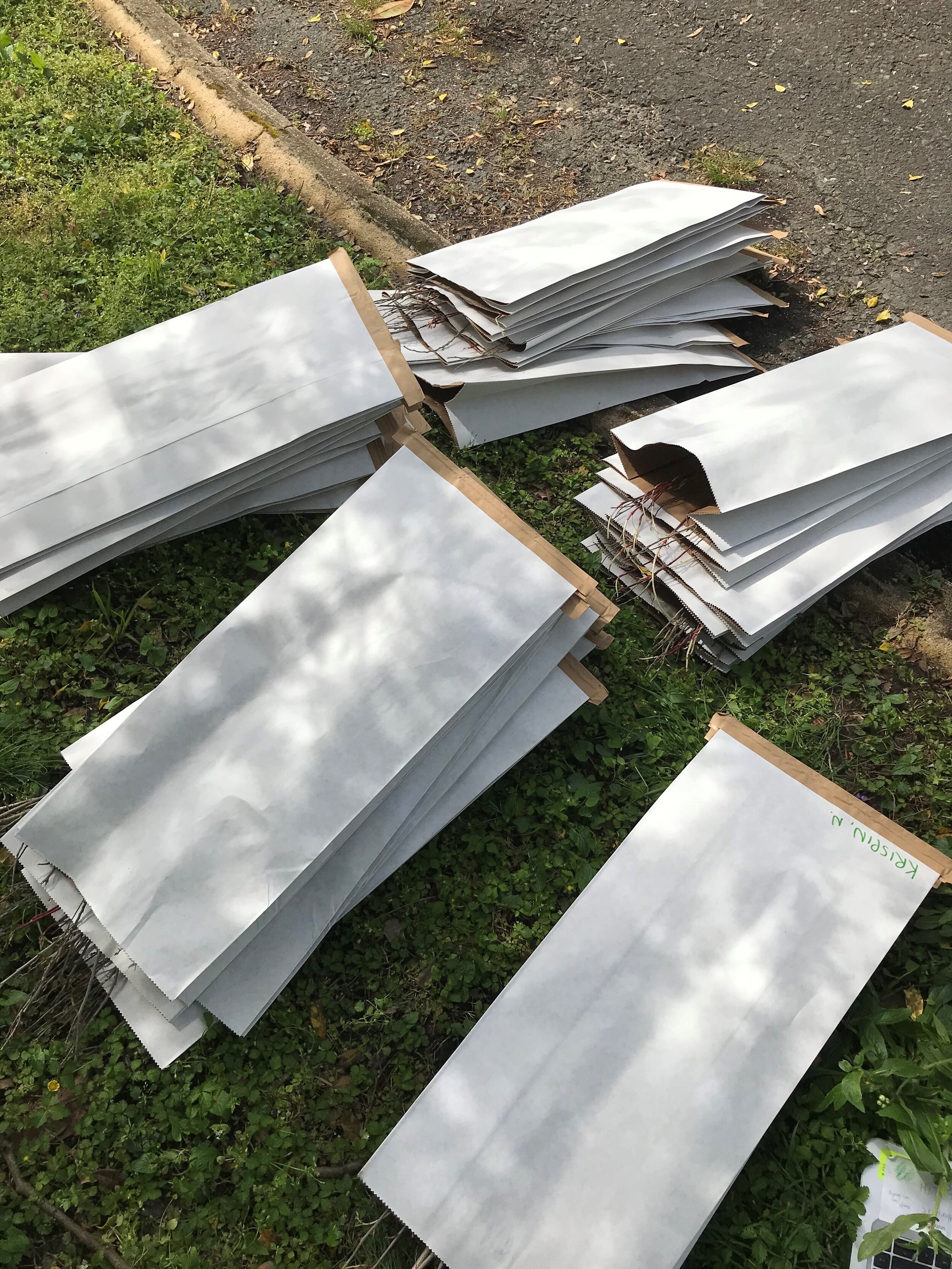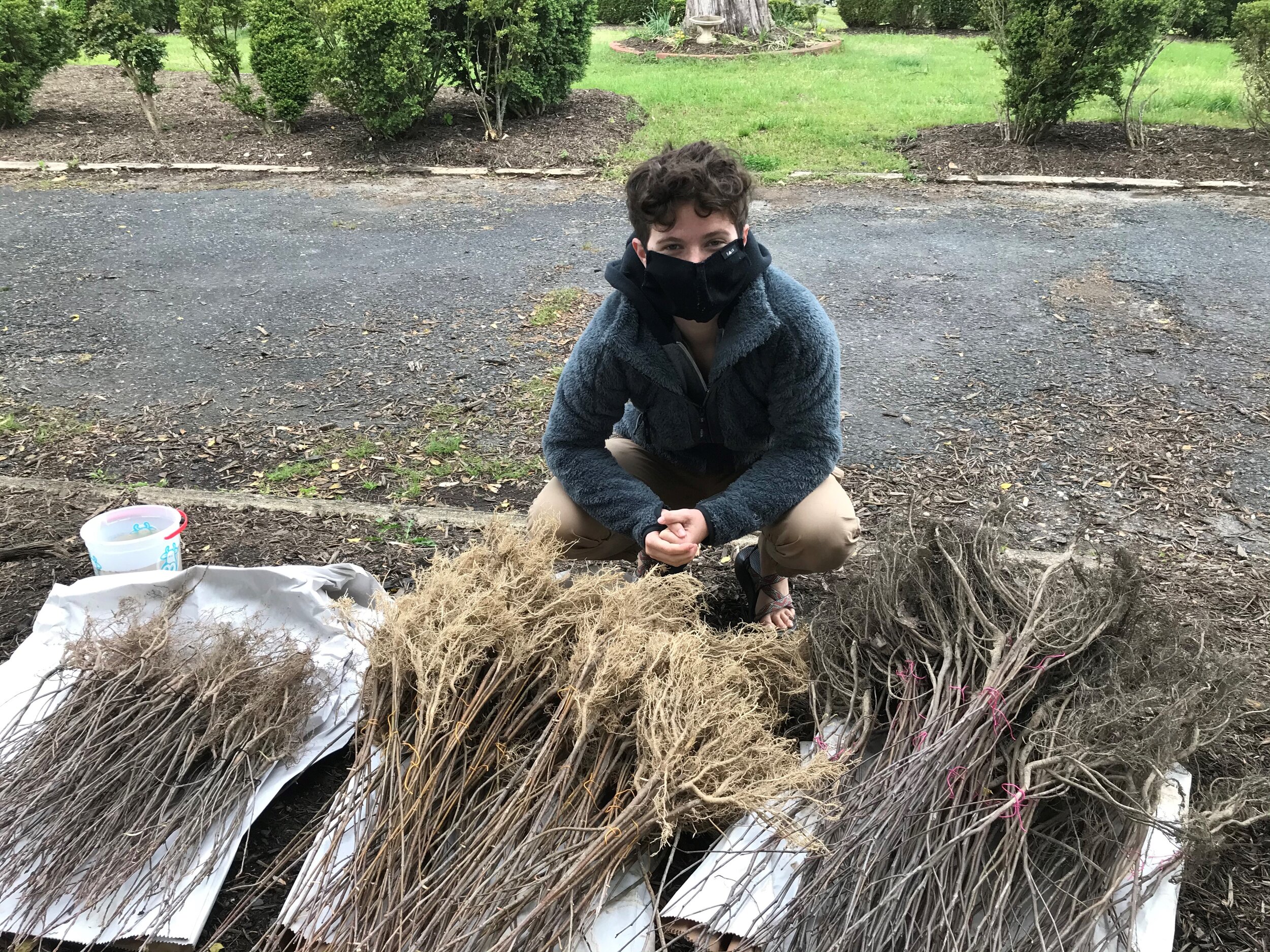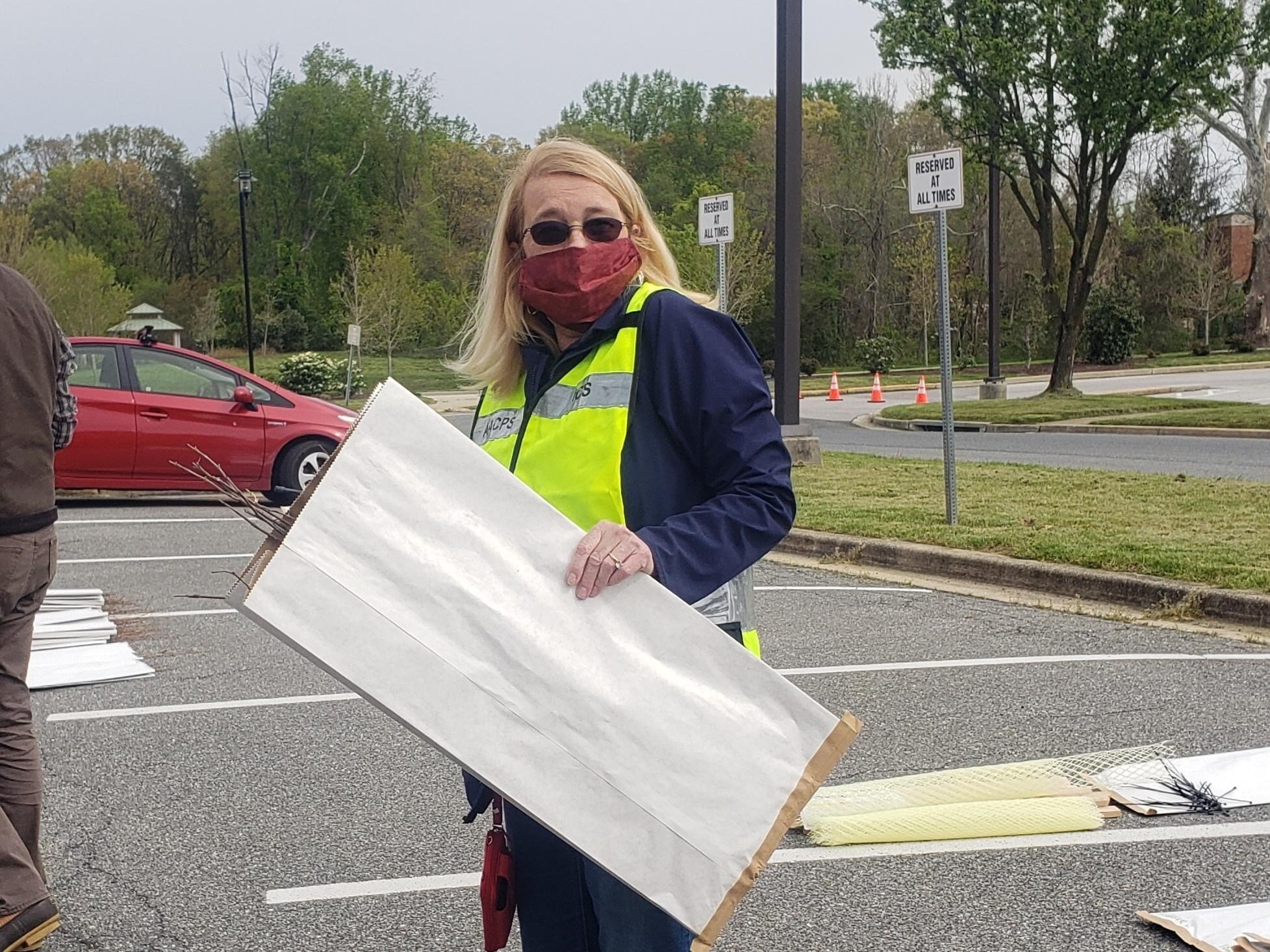Even during a quarantine, WSA and our partners were able to bundle and distribute 3,000 tree seedlings to county residents through our Backyard Buffer program. Each spring, WSA serves as Anne Arundel County’s coordinator for Maryland Department of Natural Resource’s Backyard Buffer initiative, providing homeowners with free trees and shrubs to create a native woodland buffer.
Typically, WSA relies on volunteers to help bundle buffers and holds an in person workshop to demonstrate proper planting and maintenance techniques. This year, Josh and Alyssa, WSA’s restoration team, worked tirelessly to sort and bundle our Backyard Buffers while practicing social distancing. With the help of AACPS, WSA was able to distribute over 100 bundles to county residents who will plant the seedlings throughout the county to mitigate stormwater. Participants can view webinars to determine how to best plant and care for their new additions, from determining where to plant to how to protect the seedlings from deer.
Buffer Bundles contained the three staples of the Backyard Buffer Program: bundles of large trees for wet areas, bundles of large trees for dry areas and a bundle of shrubs. This year, we also added a bundle of smaller, understory trees to the mix, so County residents had a wide selection to choose from. If you are interested in our Backyard Buffer Program, or have questions, contact Alyssa directly at cont-abrummitt@aacps.org.
2020 is the year of trees for WSA. We have rolled our Backyard Buffer program into our new Replant Anne Arundel initiative. In February, we announced our plans to plant over 4,000 trees and engage over 800 residents throughout the county by training Tree Troopers, the volunteer leaders of Replant Anne Arundel’s planting efforts. Despite COVID-19, we are planning to achieving our goal, thanks to dedicated staff and volunteers. Unfortunately our first intensive 8-hour training session, originally planned for March, was postponed. Our restoration team has been hard at work to transition much of the training online, and are excited to start training Tree Troopers on May 14th through a series of webinars, culminating in an in-person meeting to plant trees (after shelter-in-place is lifted).
So far, 70 volunteers have applied to become Tree Troopers. There is still a little bit of room left for this training, so if you are interested, apply here. If you have questions about the training or the Replant Anne Arundel Program, contact Alyssa at cont-abrummitt@aacps.org.
Planting photos above courtesy of Janine Wilkin.















